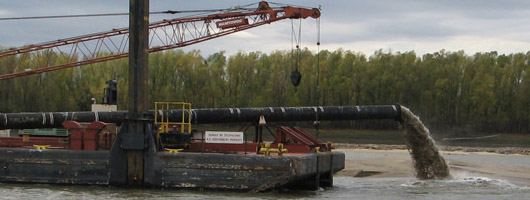
Biological Opinion
In April 1998, Region 3 of the U.S. Fish and Wildlife Service (FWS) and Mississippi Valley Division (MVD) of the U.S. Army Corps of Engineers entered into formal Section 7 consultation under the Endangered Species Act (ESA). The consultation covered the continuation of operation and maintenance activities on the Upper Mississippi River Nine Foot Navigation Channel. Direct effects addressed within the consultation were navigation channel dredging, dike and revetment maintenance, water level management, and management of Corps lands. Navigation traffic indirect effects, recreation indirect effects, and cumulative effects were also addressed.
Formal consultation was concluded in August 2000, when the MVD Commander sent a letter to the Director of Region 3 FWS setting forth an implementation plan for the Corps project that would accommodate the findings of the FWSs Biological Opinion. The species of concern and associated impacts covered in the Biological Opinion that are germane to the St. Louis District include:
- Decurrent False Aster Likely to be adversely affected, but not jeopardized
- Bald Eagle Impacts negligible or offset by management actions; No incidental take; the bald eagle was subsequently removed from the list of threatened and endangered species on August 9, 2007)
- Indiana Bat Impacts negligible or offset by management actions; No incidental take
- Interior Least Tern Incidental take with Reasonable and Prudent Measures (RPM)
- Pallid Sturgeon Jeopardy with Reasonable and Prudent Alternatives (RPA), incidental take, and RPMs.
Since 2000, the St. Louis District has undertaken many habitat restoration and research initiatives in accordance with the findings of the Biological Opinion. Examples include:
- Habitat enhancement through construction of innovative river training structures (chevrons, w-dikes, multiple roundpoint structures, offset dikes, etc.)
- Pallid sturgeon habitat, life history, and population demographics studies
- Environmental dredging
- Island/sandbar habitat creation with floating flexible dredge pipe
- Dike notching
- Side channel habitat enhancement
- Least tern habitat creation
- Decurrent false aster surveys
- Placement of woody debris/woody structures
Annual reports detailing these and other Biological Opinion activities can be found below.
